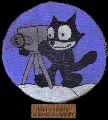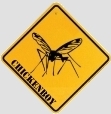Big B
Posts: 4870
Joined: 6/1/2005
From: Old Los Angeles pre-1960
Status: offline

|
Hello all. I wanted to put a question out to the Forum members with a mathematical and physics mind, regarding the Mk14 Torpedo, which has long tantalized me, specifically about the Admiral Lockwood Test.
Apparently in August 1943, tests were carried out by COMSUBPAC's gunnery and torpedo officer, Art Taylor, who used a crane to drop warheads filled with sand instead of high explosive from a height of 90 feet (27 m) (the height was chosen so the velocity at impact would match the torpedo's running speed of 46 knots). In these drop tests, 70% of the exploders failed to detonate when they hit the target at 90 degrees. A quick fix was to encourage "glancing" shots (which cut the number of duds in half).
This cuts to the meat of my quandary regarding the Lockwood (Taylor) test.
A long time ago, while researching exactly how armor penetration works (specifically at that time - the subject was WW2 AFV's), after contacting the physics Dept of Cal State Fullerton, and getting guidance on references, and contacting the US Army Historical Records Dept., as well as my local Congressman - I found some interesting phenomena.
Penetration is not simple...a shell of a given diameter, hardness, and weight must first have enough energy to overcome: the hardness of the target armor, then the thickness of the target armor, then the weight of the plate being struck, then - depending on the quality of the armor itself - the jointing or attachment of that plate to the frame or body of the vehicle as a whole, then last comes the entire density or if well fastened - the weight of the target vehicle as a whole. The projectile must overwhelm all of these combined criteria in toto to achieve penetration of the target...obviously - not all criteria are of equal weight in the calculation, but ll factor in. (not counting in incident of impact - angle of obliquity of a shell strike).
To sum up - a plate of a given thickness does not provide the same protection to an AFV in all circumstances...because of all the above factors combining at once.
Thus in WW2 terms, for example, an APCBC shell hitting the 80mm front hull plate of a PZKW IV AufsJ at 25 tons, does not offer the same challenge as penetrating the 80mm side armor of a 57 ton PZKW VI AufsE Tiger. All things being equal(?) the heavy Tiger will be harder to punch through, given the greater target mass/density to overcome.....by exactly what magnitude? - I don't know...but there's something to it.
What does that have to do with the Lockwood test? I'm coming to that...
When Taylor dropped those Mk14 torpedoes on a concrete platform at 90 feet to match the speed of a 46 knot torpedo, he got the same speed, and required deformation of the guides for (for lack of a better term) the firing pin to shoot the pistol to detonate the torpedo.
What my mind wonders is - Free Fall also introduces acceleration forces. A torpedo bullying it's way through dense ocean water - to my mind - will not have acceleration forces rapidly building up. Also, water provides buoyancy resistance above, below, and in path. It must support the weight of the 3,280 pound torpedo.
When a torpedo hits a target in mid-ocean, it's mass of weight is supported - relieving the kinetic forces of it's mass somewhat upon impact.
Put another way - the kinetic force of all 3,280 pounds is not in free-fall acceleration on the single point of it's detonator.
Also, consider that the 90 foot free-fall test was onto a concrete pad on earth. Ships, sail through water. Not only does water give, adding a bit of elasticity, but steel plates backed by air - also give to forces, - giving elasticity...any photo of any long service warship shows the skeleton of the ribs behind the deformed steel skin. Concrete on dirt/earth doesn't do that.
Therefore, I question the validity of a 90 foot drop free-fall test on it's firing pin? It seems to me one would expect forces exerted on that small firing pin to be (far) greater in such a test than would actually be expected in a real torpedo run through the ocean?
Extrapolating this hypothesis - was the Lockwood test actually creating far more failures than should be expected in real world circumstances?
The data Paul Watson extracted from actual war patrol records of hits and sinkings seems to support my quandary - given that his actual hit percentages correlated from 1942 (the highest recorded by the US Navy) - would suggest this.
This is my open question to our Forum members who understand the topic... I'm unsure.
Hey - maybe I'm all wet....I don't know.
_____________________________
|
 Printable Version
Printable Version
















 New Messages
New Messages No New Messages
No New Messages Hot Topic w/ New Messages
Hot Topic w/ New Messages Hot Topic w/o New Messages
Hot Topic w/o New Messages Locked w/ New Messages
Locked w/ New Messages Locked w/o New Messages
Locked w/o New Messages Post New Thread
Post New Thread